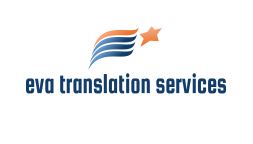
Pay Scale Disclosure – New Law Effective 1/1/2023
- On 2 December 2022
- Posted by Chantal Mariotti
Blog by ECJ Law
Website: http://www.ecjlaw.com
On September 27, 2022, Governor Newsom signed Senate Bill (SB) 1162, which requires employers with more than 15 employees to post salary scales with every job posting and to disclose the pay scale for a position held by an employee upon request, and expands pay data reporting requirements for employers with 100 or more employees.
The law will go into effect on January 1, 2023.
Pay Scale Disclosure in Job Postings and Upon Request
Under existing California law, which went into effect in January of 2018, employers were required to disclose the pay scale of any open position to any applicant upon reasonable request. That requirement was codified in California Labor Code Section 432.3.
SB 1162 modifies Labor Code Section 432.3 and provides that employers include the pay scale for a position in any job posting. Employers must also provide existing employees with the pay scale for the position in which the employee is currently employed upon reasonable request. If an employer uses a third party to publish a job posting, that third party must also follow the requirements of SB 1162.
SB 1162 applies to all private sector employers with over 15 employees. “Pay scale” is defined as the salary or hourly wage range that the employer reasonably expects to pay for the position.
Employers must maintain records of a job title and wage rate history for each employee for the duration of the employment plus three years after the end of the employment. These records must be open to inspection by the Labor Commissioner, and the Labor Commissioner is empowered to investigate complaints regarding violations. An employer that fails to keep the required records is subject to a rebuttable presumption in favor of the employee’s complaint.
Failing to meet the requirements of the statute carries stiff penalties: the Labor Commissioner may order the employer to pay a civil penalty of no less than one hundred dollars ($100) and no more than ten thousand dollars ($10,000) per violation, depending on the circumstances, including, but not limited to, whether the employer has previously violated the statute. However, no penalty will be assessed for a first violation if the employer demonstrates that all job postings for open positions have been updated to include the pay scale. Persons alleging violations may also bring a civil action for injunctive relief and any other relief that the court deems appropriate.
Pay Data Requirements
The second prong of SB 1162 is an expansion of pay data reporting requirements, codified in Section 12999 of the Government Code. Specifically, in 2020, California enacted SB 973, which was designed to identify patterns of wage disparities through mandated statewide pay data requirements which were related to Employer Information Report (EEO-1) requirements under federal law. Currently, employers with 100 or more employees must submit an annual EEO–1 to the federal Equal Employment Opportunity Commission. These employers may submit the same form to the California Civil Rights Department on or before March 31 each year.
SB 1162 instead requires all private employers with 100 or more employees to submit a pay data report to the department. The first such report will be due on May 10, 2023; additional reports are due on or before the second Wednesday of May of each year thereafter. Under the new law, employers can no longer satisfy this requirement by submitting an EEO-1 with similar information. Further, SB 1162 expands the reporting requirements to include employers that have had 100 or more employees hired through labor contractors within the prior calendar year.
The California pay data report must include the following information:
- The number of employees by race, ethnicity, and sex in each of the following job categories: executive or senior level officials and managers; mid-level managers; professionals; technicians; sales workers; administrative support workers; craft workers; operatives; laborers and helpers; and service workers;
- The number of employees by race, ethnicity, and sex, whose annual earnings fall within each of the pay bands used by the U.S. Bureau of Labor Statistics;
- The median and mean hourly rate for each combination of race, ethnicity and sex within each job category;
- The total number of hours worked by each employee in each pay band during the reporting year.
To establish the numbers required for the report, employers are instructed to create a “snapshot” that counts all of the individuals in each job category by race, ethnicity, and sex, employed during a single pay period of the employer’s choice between October 1 and December 31 of the reporting year. Annual earnings must be calculated using the Internal Revenue Service Form W-2 for each employee in the selected pay period for the entire reporting year, regardless of whether or not an employee worked for the full calendar year.
Governor Newsom’s press release touting the law states: “SB 1162 requires employers to make pay scale information available to employees and included in job postings. Building on a measure the Governor signed in 2020 to identify patterns of wage disparities through mandated statewide pay data reporting, SB 1162 expands state pay data reporting requirements, which include employee sex, race and ethnicity information, to cover contracted employees.”
Employers that fail to provide the required report are subject to a civil penalty of $100/per employee for an initial failure, and $200/per employee for any subsequent failure to file the report. Courts are permitted to apportion an appropriate amount of penalties to any labor contractor that has contributed to an employer’s failure to file a report by not providing the necessary pay data to the employer.
Covered California employers must prepare to meet these onerous data requirements, and allocate internal resources accordingly, in order to provide this data by the second Wednesday of May of 2023, and each year thereafter.


